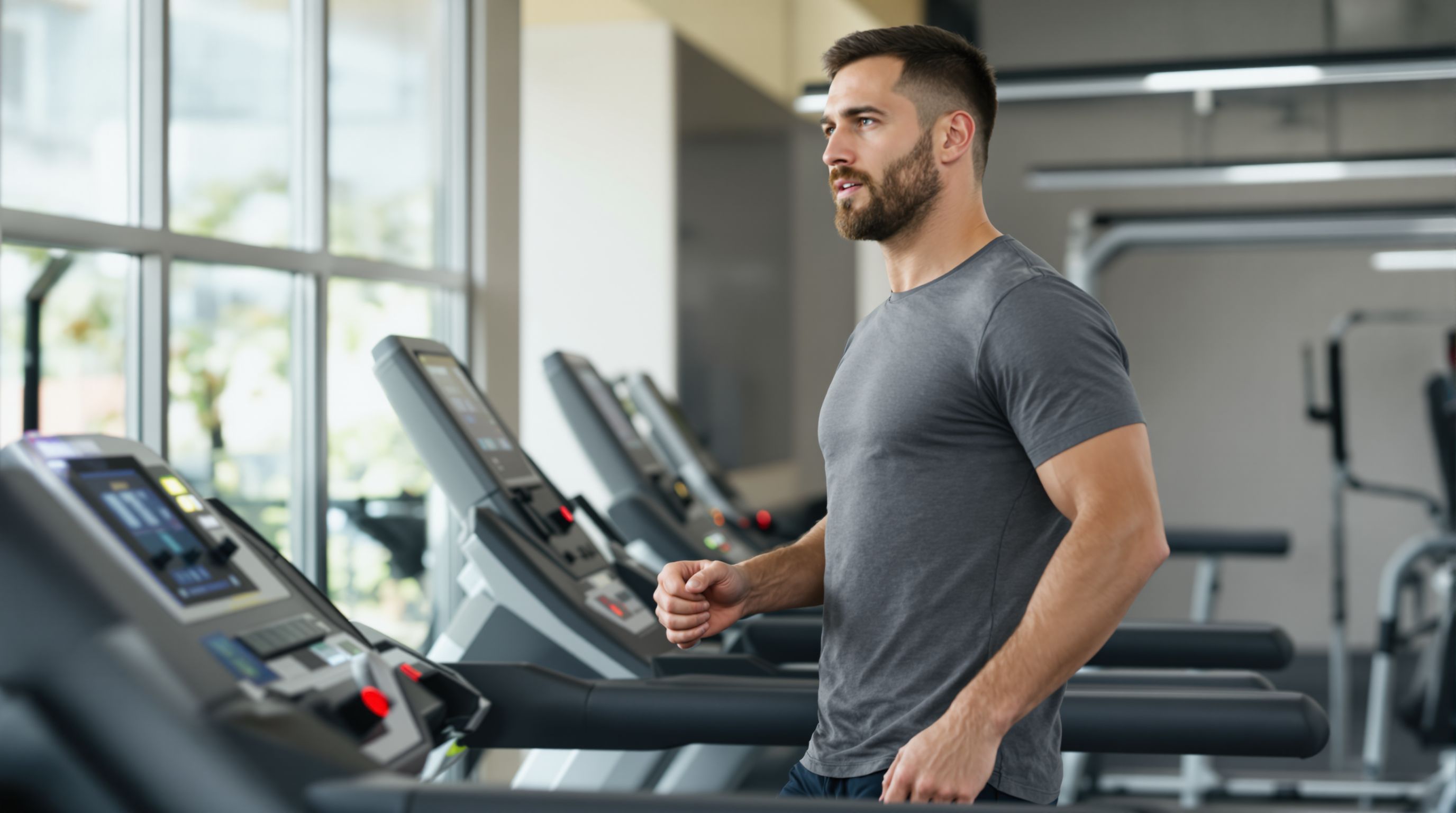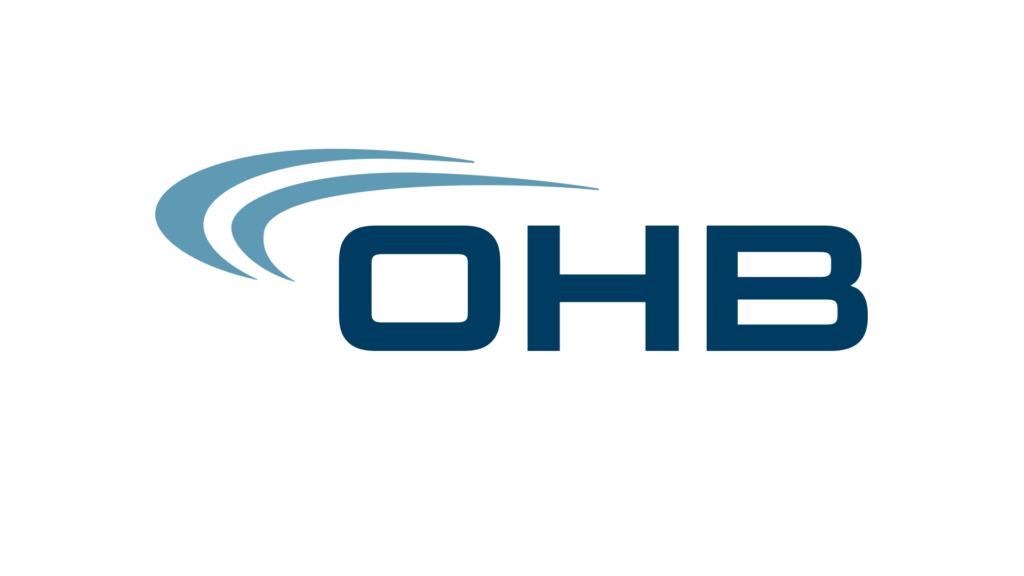Have you ever seen how some people at work have so much energy all day, while others feel tired and can’t focus after lunch? The reason might be easier than you guess. The relationship between exercise and productivity isn't just anecdotal—it's backed by compelling scientific evidence that shows physical activity can transform your work performance. But here's what most people don't realize: the benefits go far beyond just having more energy. By the end of this article, you'll discover exactly how exercise can revolutionize your workday in ways you never expected—and why the most successful companies are making it a priority.
The Science Behind Exercise and Workplace Performance
The connection between exercise and productivity is rooted in biology. When you engage in physical activity, your body responds with a cascade of physiological changes that directly benefit your brain function and work performance.
During exercise, blood flow to the brain increases significantly, delivering more oxygen and nutrients to brain cells. This enhanced circulation triggers the release of brain-derived neurotrophic factor (BDNF), often called "miracle-gro for the brain," which supports the growth of new neurons and strengthens existing neural connections.
Exercise is the single most powerful tool you have to optimize your brain function. — John Ratey, MD, Harvard Medical School
Research published in the Journal of Occupational and Environmental Medicine found that workers who participated in regular physical activity experienced a 72% improvement in time management and mental performance compared to their sedentary colleagues. This translates to tangible workplace benefits:
- Enhanced cognitive function
- Improved concentration and focus
- Better memory retention
- Increased creativity and problem-solving abilities
A particularly interesting study from the University of British Columbia discovered that regular aerobic exercise appears to increase the size of the hippocampus, the brain region involved in verbal memory and learning. This explains why physically active employees often demonstrate superior information processing and decision-making capabilities.
The relationship between exercise and productivity isn't linear—it follows what scientists call a "dose-response" pattern. This means even moderate amounts of physical activity can yield significant benefits, with diminishing returns after a certain threshold. For most people, 150 minutes of moderate exercise per week (about 30 minutes, five days a week) hits the sweet spot for cognitive benefits.
Mental Clarity and Focus: Exercise as a Brain Booster

In today's distraction-filled workplace, maintaining focus is more challenging—and more valuable—than ever. Exercise and productivity are linked through several mechanisms that enhance mental clarity.
When you exercise, your brain releases a cocktail of neurotransmitters including dopamine, serotonin, and norepinephrine. These chemicals play crucial roles in attention, motivation, and focus. The immediate effect is a state of enhanced alertness that can last for several hours after your workout.
A Stanford University study found that walking increased creative output by an average of 60% compared to sitting. Participants generated more creative ideas while walking than while sitting, and this effect continued even when they sat down shortly after walking.
Here's how different types of exercise affect your focus:
| Exercise Type | Focus Benefits | Duration of Effect | Best For |
|---|---|---|---|
| Aerobic (running, cycling) | Immediate boost in alertness and concentration | 2-3 hours | Complex problem-solving, creative tasks |
| Strength Training | Improved executive function and decision-making | 24-48 hours | Strategic thinking, analytical work |
| Yoga/Tai Chi | Enhanced sustained attention and mindfulness | 4-6 hours | Detail-oriented tasks, precision work |
| HIIT (High-Intensity Interval Training) | Rapid improvement in mental clarity | 1-2 hours | Deadline-driven tasks, quick decisions |
Many professionals find that breaking their workday with short exercise sessions helps them maintain peak mental performance throughout the day. This practice, sometimes called "exercise snacking," involves brief 5-10 minute activity breaks that can reset focus without disrupting workflow.
Neroia, a social employee benefits platform, has recognized this connection between exercise and productivity by creating an AI-powered system that suggests physical activities tailored to individual employee interests. By making it easier for colleagues to engage in sports and wellness activities together, Neroia helps companies transform exercise from a solitary pursuit into a team-building opportunity that enhances both physical health and workplace connections.
Stress Reduction and Emotional Resilience Through Physical Activity
In the modern workplace, stress is often cited as the number one productivity killer. The exercise-productivity connection offers a powerful antidote to this common challenge.
Physical activity is one of the most effective natural stress relievers available. When you exercise, your body reduces levels of stress hormones like cortisol while simultaneously increasing endorphins—natural mood elevators that create feelings of relaxation and optimism.
A landmark study in the Journal of Occupational Health Psychology found that employees who exercised regularly experienced:
- 20% higher emotional resilience
- 41% lower perceived stress levels
- 68% better ability to manage workplace conflicts
These benefits directly translate to improved productivity. When you're less stressed, you make fewer errors, communicate more effectively, and approach challenges with a solution-oriented mindset rather than feeling overwhelmed.
Different forms of exercise offer varying stress-management benefits:
- Rhythmic activities like running, swimming, or cycling create a meditative state that helps process emotional stress
- Team sports provide social support while releasing tension
- Mindful movement practices like yoga combine physical activity with meditation techniques
- Strength training builds physical and mental resilience simultaneously
The stress-reducing effects of exercise extend beyond the workday. Regular physical activity improves sleep quality, creating a virtuous cycle where better rest leads to better stress management the following day.
Exercise not only changes your body; it changes your mind, your attitude, and your mood.
For maximum stress-reduction benefits, consistency matters more than intensity. A daily 20-minute walk provides more sustainable stress management than an occasional intense workout. This makes workplace exercise programs particularly valuable, as they encourage regular participation.
Energy Management: How Exercise Fights Fatigue and Boosts Stamina
It might seem counterintuitive, but expending energy through exercise actually creates more energy for your workday. This paradox is central to understanding the exercise and productivity relationship.
Physical activity improves energy levels through several mechanisms:
- Improved cardiovascular efficiency: Regular exercise strengthens your heart and improves circulation, delivering oxygen and nutrients to tissues more effectively.
- Enhanced mitochondrial function: Exercise increases the number and efficiency of mitochondria, the cellular powerhouses that produce energy.
- Better glucose regulation: Physical activity improves insulin sensitivity, helping maintain stable blood sugar levels throughout the day.
- Optimized hormone balance: Exercise regulates hormones like cortisol that affect energy levels.
A University of Georgia study found that sedentary people who began a regular exercise program reduced their fatigue by 65% compared to those who remained inactive. Even more surprising, low-intensity exercise was more effective at reducing fatigue than high-intensity workouts.
The timing of exercise also matters for energy management:
| Time of Day | Energy Effect | Best For |
|---|---|---|
| Morning | Sets positive tone for the day, improves alertness | Front-loading mental tasks |
| Lunchtime | Combats mid-day slump, refreshes focus | Maintaining afternoon productivity |
| Evening | Releases workday tension, improves sleep quality | Recovery and next-day preparation |
For workplace implementation, short activity breaks distributed throughout the day can be more effective than a single longer session. This approach aligns with our natural ultradian rhythm—the 90-120 minute cycles of peak performance followed by fatigue that our bodies naturally experience.
Creative Thinking and Problem Solving: The Movement-Innovation Connection
The link between exercise and productivity extends to one of the most valuable workplace skills: creative thinking. Physical activity stimulates cognitive flexibility—the ability to switch between different concepts and consider multiple perspectives.
Stanford researchers found that walking increased creative output by an average of 60%, and the effect persisted even after participants sat down. This suggests that incorporating movement breaks before brainstorming sessions or when facing complex problems could significantly enhance innovation.
Several mechanisms explain this creativity boost:
- Increased cerebral blood flow brings more oxygen and glucose to brain regions involved in creative thinking
- Neurogenesis (the formation of new brain cells) in the hippocampus supports the formation of novel connections between ideas
- Temporary disengagement from problems during exercise allows for unconscious processing, often leading to "aha moments"
- Improved mood through exercise-induced endorphins creates the positive emotional state conducive to creative thinking
Different types of exercise appear to stimulate different aspects of creativity:
- Aerobic activities like running or cycling enhance divergent thinking—the ability to generate multiple solutions
- Coordination exercises like dance or martial arts improve convergent thinking—finding the optimal solution among alternatives
- Nature-based activities like hiking combine exercise with environmental stimuli that further boost creative capacity
Organizations can leverage this connection by designing workspaces that encourage movement and by implementing programs that combine physical activity with innovation challenges.
Social Connection and Team Building Through Physical Activity
Exercise doesn't just boost individual productivity—it can transform team dynamics and workplace culture. The shared experience of physical activity creates bonds that transfer back to professional collaboration.
Research from the Journal of Organizational Behavior found that teams who exercised together demonstrated:
- 26% higher levels of cooperation
- 17% better communication
- 21% stronger trust relationships
These improvements stem from several factors:
- Shared endorphin release creates positive associations with team members
- Vulnerability and support during physical challenges builds psychological safety
- Non-hierarchical interaction during exercise breaks down formal workplace barriers
- Achievement of common goals transfers to work-related objectives
This is where Neroia's innovative approach to employee benefits shows particular promise. By using AI to suggest activities tailored to individual interests and schedules, Neroia facilitates small-group gatherings around sports and wellness activities. These organic connections help break down departmental silos and create cross-functional relationships that might not otherwise form in the workplace.
The most effective teams are those that combine work and play in ways that build authentic connections. — Adam Grant, Organizational Psychologist
Companies can foster these connections by:
- Creating team challenges around physical activity goals
- Offering group exercise classes during or after work hours
- Organizing active off-sites or retreats
- Supporting employee-led sports teams or activity groups
The social dimension of exercise adds a powerful multiplier to its productivity benefits, making workplace wellness programs that incorporate group activities particularly effective.
Implementing an Exercise Routine for Maximum Productivity

1. Start with your schedule
Identify your peak energy periods and schedule exercise to complement them. If you're a morning person, an early workout can enhance your natural productivity peak. If you experience afternoon slumps, a midday activity break might be more beneficial.
2. Match exercise type to work demands
Different activities offer different cognitive benefits:
- Need focus for detailed work? Try 20 minutes of moderate cardio
- Facing a creative challenge? A walk outdoors might spark innovation
- Preparing for a high-pressure presentation? Strength training can build confidence
- Dealing with workplace tension? Yoga or tai chi promotes emotional regulation
3. Create minimal barriers
The most effective exercise routine is one you'll actually follow. Keep workout clothes at your desk, identify simple activities that don't require special equipment, and find opportunities for "movement snacks" throughout your day.
4. Track productivity, not just exercise
Notice how different types, durations, and timings of exercise affect your work performance. This personal data will help you optimize your routine for productivity, not just fitness.
- Morning: 10-minute bodyweight circuit
- Mid-morning: 5-minute walking break
- Lunch: 15-minute brisk walk
- Mid-afternoon: 5-minute stretching session
- Evening: 20-minute strength training or longer recreational activity
This approach distributes approximately 55 minutes of activity throughout the day, maximizing both the physical and cognitive benefits while minimizing disruption to workflow.
Workplace Wellness Programs: Supporting Exercise for Collective Productivity
Forward-thinking organizations are increasingly recognizing that supporting employee exercise isn't just about health benefits—it's a productivity strategy with measurable returns on investment.
Effective workplace wellness programs that focus on physical activity have demonstrated:
- 28% reduction in sick days
- 26% decrease in health costs
- 30% reduction in workers' compensation claims
- 8-11% improvement in overall productivity
The most successful programs share several key characteristics:
- Accessibility: Options for employees of all fitness levels and abilities
- Flexibility: Multiple ways to participate that accommodate different schedules and preferences
- Social support: Opportunities for team-based activities and friendly competition
- Leadership involvement: Visible participation from management
- Integration: Exercise opportunities woven into the workday rather than added on
This is where innovative solutions like Neroia provide particular value. By suggesting activities tailored to individual employee interests and schedules, Neroia's platform makes it easier for companies to implement personalized wellness programs that employees actually want to use. The AI-powered system facilitates small-group gatherings around sports, wellness, and cultural events, creating organic connections while promoting physical activity.
The best wellness programs don't feel like corporate initiatives—they feel like natural extensions of the company culture. — Harvard Business Review
Overcoming Barriers to Exercise in the Workplace
Despite the clear connection between exercise and productivity, many employees and organizations face challenges in implementing regular physical activity. Understanding and addressing these barriers is essential for realizing the productivity benefits of exercise.
Common individual barriers include:
- Time constraints: Feeling too busy with work demands
- Energy concerns: Worrying that exercise will deplete energy needed for work
- Confidence issues: Discomfort exercising around colleagues
- Knowledge gaps: Uncertainty about effective exercise approaches
Organizational barriers often include:
- Work culture: Implicit expectations that prioritize desk time over activity
- Physical environment: Lack of facilities or space for movement
- Policy limitations: Inflexible schedules that don't accommodate activity breaks
- Leadership example: Management that doesn't visibly prioritize physical activity
Effective strategies for overcoming these barriers include:
- Start small: Even five minutes of activity provides benefits
- Normalize movement: Make walking meetings and stretch breaks standard practice
- Create environmental cues: Keep exercise equipment visible and accessible
- Build social accountability: Form exercise groups or challenges
- Focus on immediate benefits: Emphasize productivity and mood improvements, not just long-term health
The Future of Exercise and Workplace Productivity
As our understanding of the exercise-productivity connection deepens, innovative approaches are emerging that promise to further enhance the benefits of physical activity in the workplace.
Several trends are shaping this evolution:
- Personalization: Using data to identify the optimal exercise type, duration, and timing for each individual's cognitive needs
- Integration: Seamlessly weaving physical activity into work processes rather than treating it as separate from "real work"
- Technology enablement: Wearable devices and apps that provide real-time feedback on how exercise affects cognitive performance
- Environmental design: Workspaces engineered to naturally encourage movement throughout the day
- Cultural transformation: Shifting from a model where sitting still equals productivity to one that recognizes movement as essential to optimal performance
Companies at the forefront of this transformation are seeing remarkable results. For example, organizations implementing activity-based working environments report productivity increases of up to 25%, while those with comprehensive movement programs show significant improvements in innovation metrics and employee engagement.
Neroia represents this forward-thinking approach by providing a social employee benefits platform designed to foster organic connections among coworkers through physical activities. Its AI-powered system suggests activities tailored to individual employee interests and schedules, facilitating small-group gatherings that break down departmental silos while promoting physical wellbeing. By making exercise a social experience rather than just another health mandate, Neroia helps companies build stronger cross-departmental ties while improving both physical health and workplace productivity.
Conclusion: The Transformative Power of Exercise for Work Performance
The connection between exercise and productivity is more than just a wellness trend—it's a fundamental principle supported by extensive scientific evidence. Physical activity enhances virtually every aspect of cognitive performance that matters in the workplace: focus, creativity, energy management, stress resilience, and collaborative capacity.
The most compelling aspect of this relationship is its accessibility. Unlike many productivity interventions that require significant investment or organizational change, incorporating more movement into your workday is something you can begin immediately, with minimal resources, and with benefits that start accruing from day one.
For organizations, supporting employee exercise represents one of the highest-return investments available. The productivity gains, reduced absenteeism, and enhanced innovation capacity far outweigh the costs of implementing exercise-friendly policies and programs.
As we move forward in an increasingly knowledge-based economy, physical activity may seem less relevant to work performance. In reality, the opposite is true—the cognitive demands of modern work make the brain-boosting effects of exercise more valuable than ever.
By embracing the exercise-productivity connection—whether through individual habits, team activities, or company-wide initiatives—we can transform not just how we work, but how well we work. In this transformation lies the potential for workplaces that are not only more productive, but more energized, creative, and fulfilling.
The evidence is clear: for peak productivity, your body needs to move as much as your mind needs to think. The two are inseparable partners in the pursuit of excellence.




